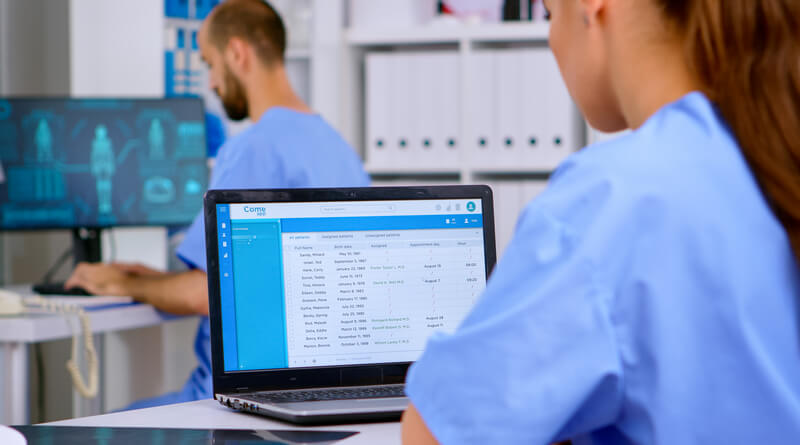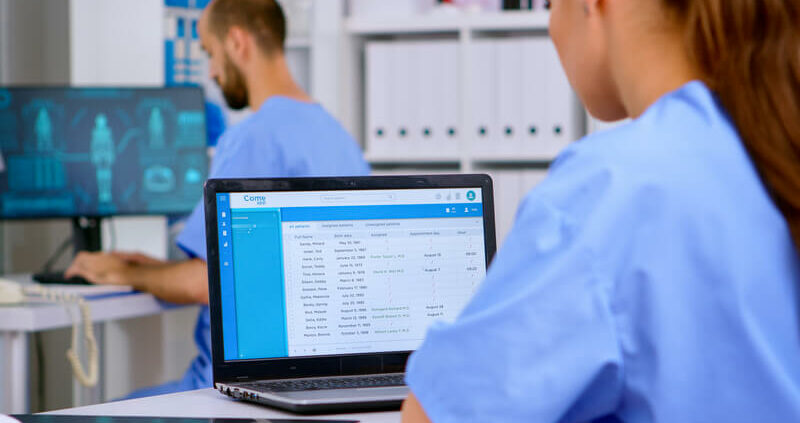Integration of Telehealth and EHR can Contribute a Lot to Healthcare

Introduction
Electronic Health Records (EHR) is a well-known source for patient care, analyzing patient data, and reducing extremely high costs. Also, the EHR systems have benefited the healthcare industry to decrease mortality rates for acute and chronic diseases of patients.

The system of remote patient monitoring and care has been introduced since the 1960s when astronauts started to explore space. However, it took a long time for us to integrate the software and healthcare platforms in but with the Covid-19 pandemic hit, the global lockdown has stimulated the telehealth adoption process in our daily lives.
And it’s not surprising that the industry of healthcare software development has risen more than before as there are reputable companies providing several medical software solutions to patients and doctors, such as:
- Interacting in-real time
- Appointment settings and tokens
- Laboratory tests assignments & Results
- Collecting and maintaining private health information (PHI)
- Video calling with medical experts
By integrating the best technologies, these software solutions help doctors, patients, nurses, lab technicians, pharmacists, etc. For instance, a touchless patient identification platform like RightPatient can help ensure patient data integrity, prevent duplicate and overlaid medical records, and enhance patient safety.
As we all know that throughout the pandemic, patients have shifted to telehealth services to receive medical care, thus, it became hard for providers to monitor patients’ data to the EHR system.
At this point, the healthcare providers started to search for interoperability, hence, the next need becomes the integration of EHR with telehealth solutions.
Now the whole world is leaning towards digitalization, hence hybrid telehealth matches the innovative care model, care providers would require to integrate telehealth solutions within the EHR system to enhance clinical workflows.
Moreover, modern telehealth providers are generating solutions in a way that would help them to integrate with common EHR solutions, through increasing interoperability. When these platforms are tangled they assist to streamline patients’ data in an exclusive window.
This, eventually, benefits providers to deliver a more reliable care delivery system. In this post, we will find out why integrating telehealth is a great idea and what are the benefits that come with Electronic Health Records (EHR) and telehealth integration.
What is Telehealth integration?
Integrating telehealth into the EHR system can benefit providers to enhance clinical workflows. Most telehealth providers now generate solutions that mix with popular EHR systems, which improves patient care and grows interoperability.
Whenever the platforms combine, such as EHR systems and telehealth solutions, taking care of patients becomes an easy task.
A perfect telehealth experience will be the same as a virtual visit to the office instead of FaceTiming with your family.
With an integrated telehealth solution, it’s simple for the administrative department to check in the patient while the nurse interacts with the patient.
What is EHR integration?
An electronic health record (EHR) is the electronic storage of a patient’s health data or paper health chart. EHRs often cover medical history, analyses, diseases, immunization records, labs, radiology pictures, medication history, medical data, and other related financial records.
EHR integration is a critical start for any health software that aspires to take advantage of the wide range of data prepared in digital health systems.
The mass of digital health records is collected in EHRs, including both data regarding specific patients and more extensive knowledge about healthcare systems and communities.
Integration of Telehealth and EHR
Nowadays, telehealth providers started to develop systems that can be integrated with EHR platforms that help patient data to transfer quickly. When utilized simultaneously, telehealth and EHR systems can excellently enhance the care delivery system.
There are several different business cases for integrating with EHRs. So, after integrating with an EHR, the apps that serve specific customers can produce more satisfying expertise and conceivably even drive upgraded health outcomes by developing standard healthcare activities such as scheduling, telehealth, and billing.
When there is a way to access organizational data saved in EHRs, digital products easily can help healthcare systems to enhance business and patient results organization-wide, with processes and simplifying business necessities like patient data interchange, profits cycle management, and acquisition.
Benefits of EHR and Telehealth integration
There are so many EHR integration solutions that render methods to progress healthcare data between EHR systems and applications and services.
- Automate Data Entry: Integrating these two systems reduces the requirement for double data entries. When providers take records throughout a telehealth visit, this data directly accords into the patient’s health record, easing the data entry process.
- Synchronize Patient Insurance Data: Telehealth and EHR systems can check patient fitness before appointing them for a virtual telehealth visit. This guarantees providers are compensated for their experience and services, decreasing confusion and expensive obstacles in the workplace.
- Streamline the Provider and Patient Virtual Care Experience: Installing telehealth technology within the system’s EHR system delivers providers easy access to the patient’s health records, using the same method they are now familiar with.
- Advanced Clinical Workflow: As the pandemic falls, healthcare providers will regard the hybrid telehealth example, where patients will get benefits of both in-person and virtual meetings. In such a situation, managing clinical workflow like administrative duties such as appointment booking & notices, answering inquiries, etc. gets simple with EHR telehealth integration.
Conclusion
Integrating these two systems facilitates the stream of information, decreases the possibility of mistakes while updating a patient’s records, enhances patient outcomes, and analyzes the billing process. Providers contemplating implementing a telehealth system requires a platform that perfectly integrates with their current EHR system. This way, they will be able to provide the best outcome to their customers.









Leave a Reply
Want to join the discussion?Feel free to contribute!